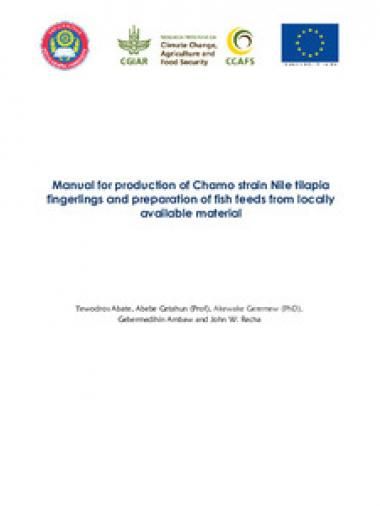Manual for production of Chamo strain Nile tilapia fingerlings and preparation of fish feeds from locally available material

Climate change has resulted in increased local temperatures that in turn have increased evapotranspiration, and negatively affected the breeding grounds of several important fish species due to reduction in the water levels of water bodies (Ficke et al. 2007). The rise in local temperature also affects the physico-chemical properties of water, including temperature, pH, dissolved oxygen, salinity, and concentration of different ions in water bodies (El Morhit & Mouhir 2014). These changes negatively affect the physiological (e.g. reproduction) and behavioral dynamics of fish as well as their natural feed leading to lower production of capture fish (Chabot & Guénette 2013).
To increase production of capture fish, there is need for a reliable method for mass production of fry. Although tilapia breed freely in ponds, it is important for farmers (producers) to consider using properly produced fingerlings. However, there are quality challenges with semi-natural or hormone-induced propagation of fingerlings. Quality fingerlings in tilapia aquaculture are needed for improved production. For this reason, it is advisable for farmers to generate their own fingerlings if they cannot ascertain the quality of those from other sources. Poor fingerlings result in poor harvests. Therefore, artificial propagation under controlled environmental conditions in a hatchery has become a necessity to ensure production en-masse of fry and fingerlings.
Citation
Abate T, Getahun A, Geremew A, Ambaw G, Recha JW. 2020. Manual for production of Chamo strain Nile tilapia fingerlings and preparation of fish feeds from locally available material. Wageningen, the Netherlands: CGIAR Research Program on Climate Change, Agriculture and Food Security (CCAFS).